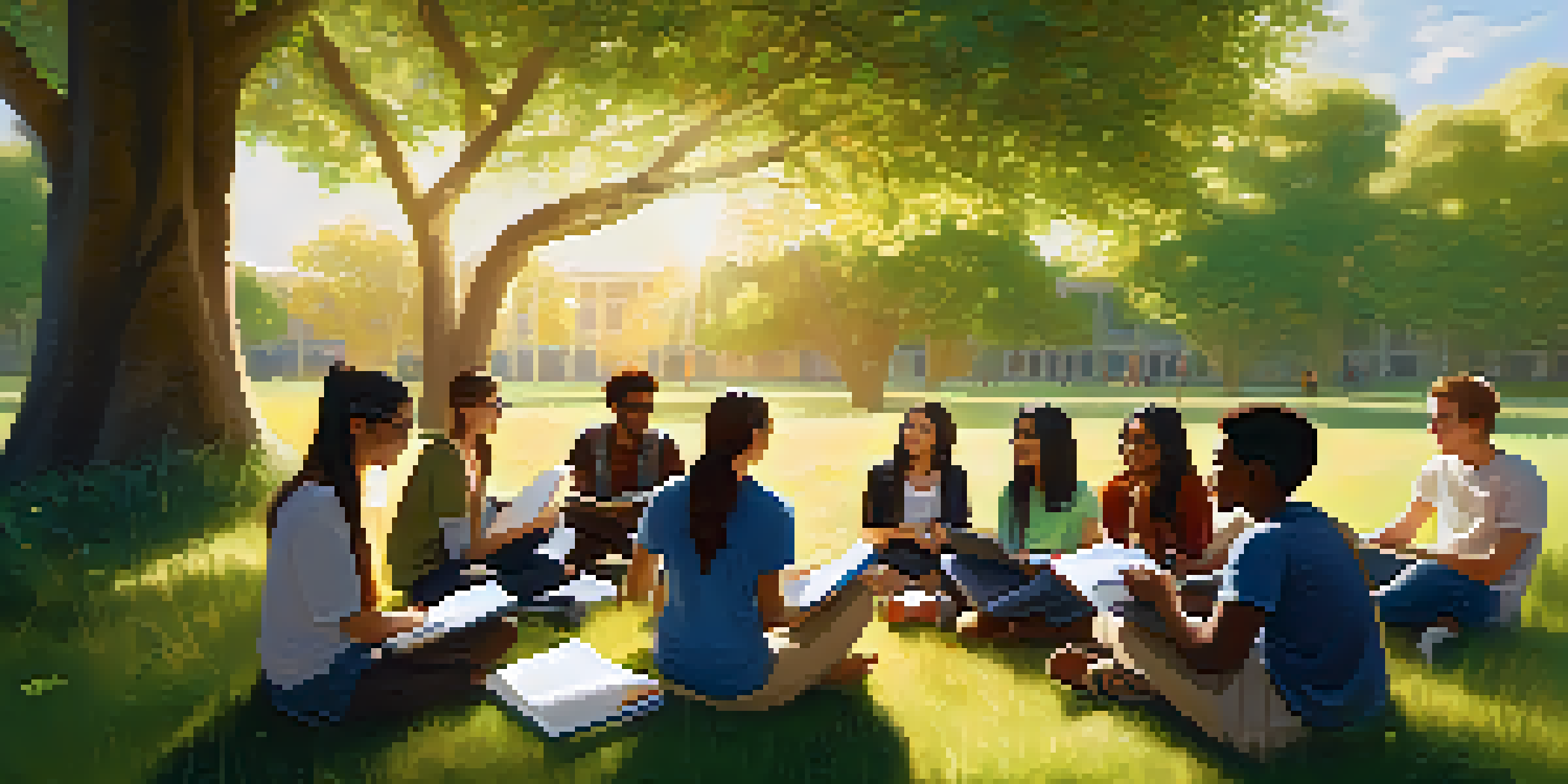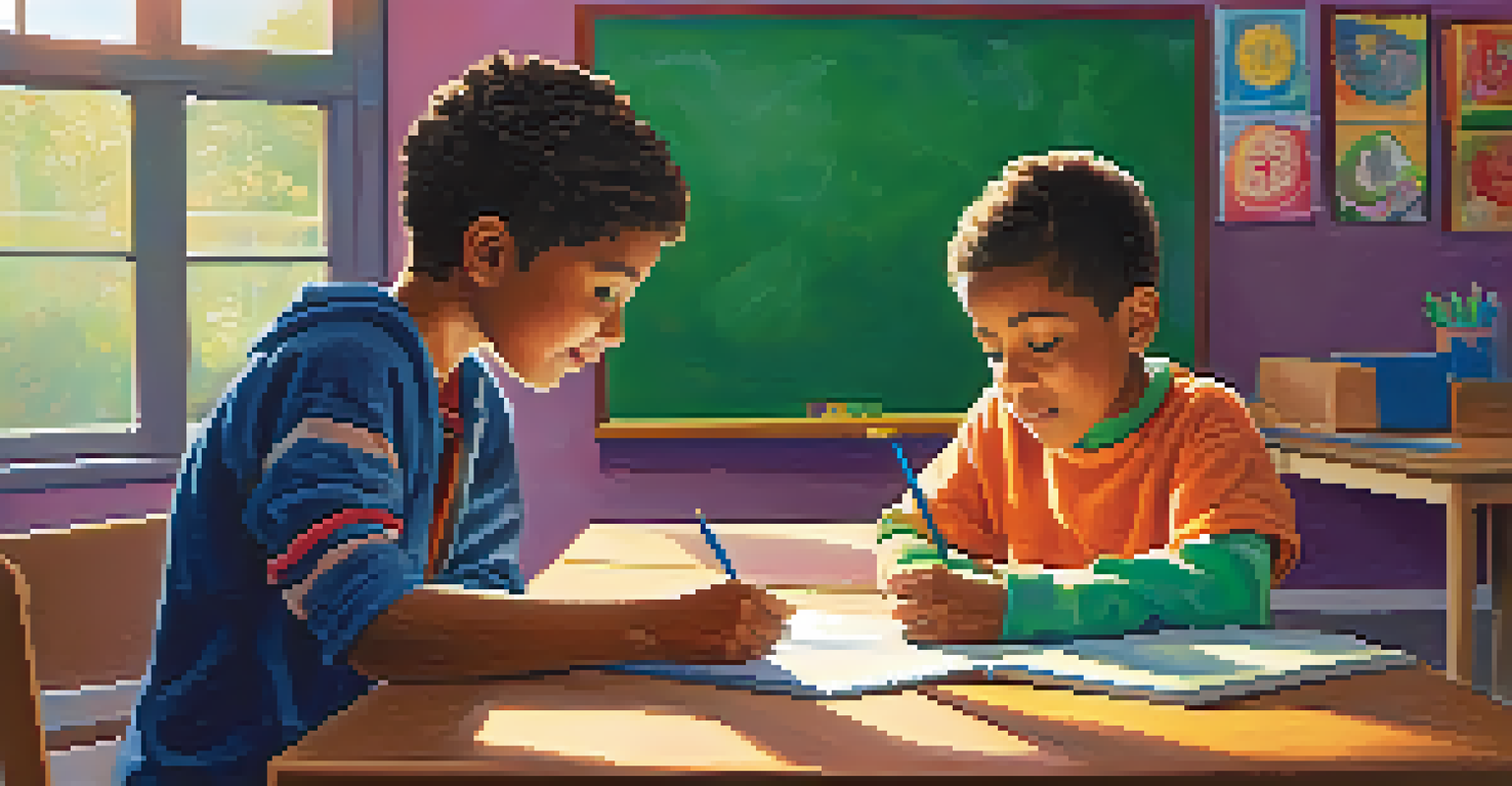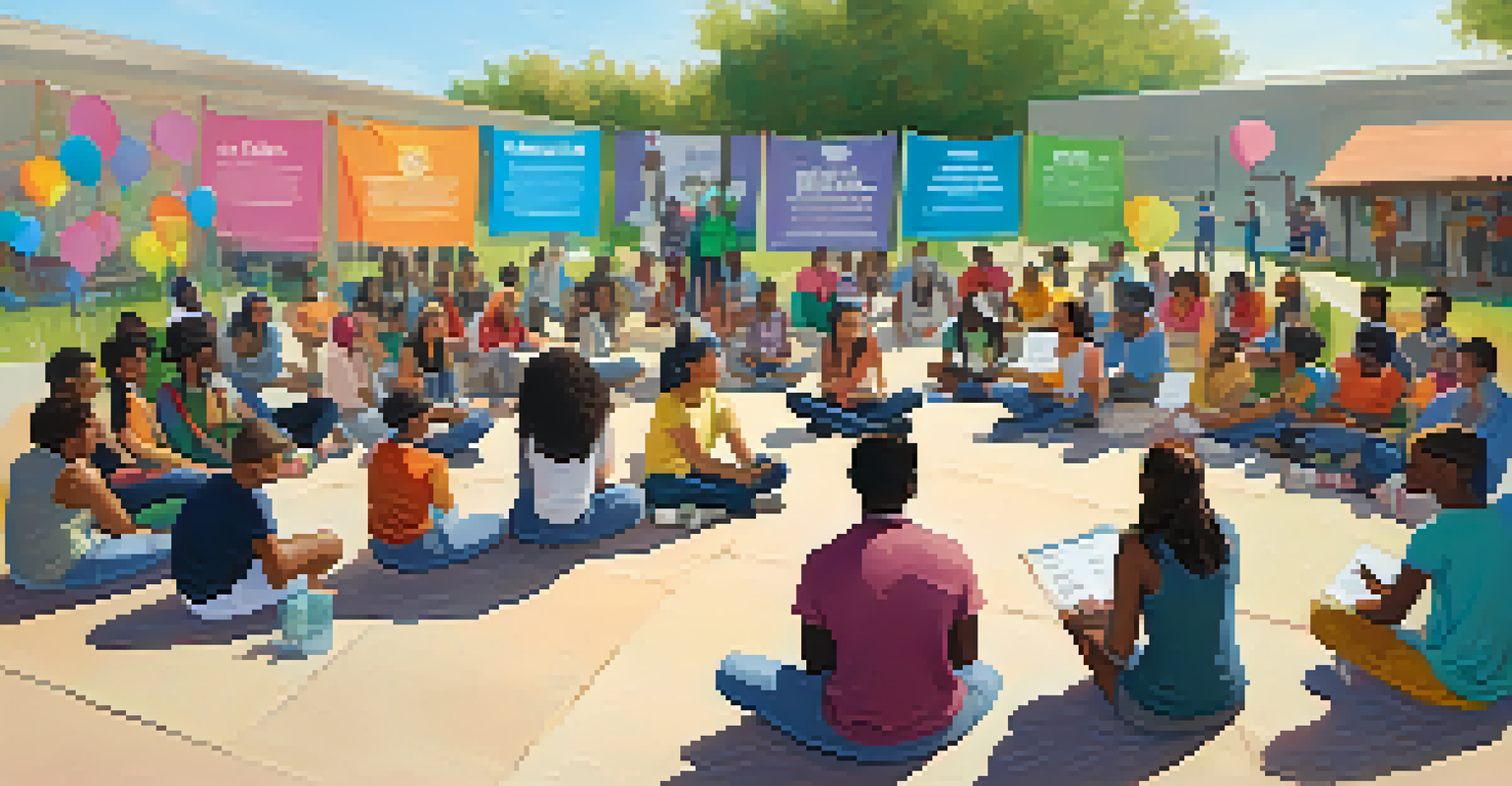Peer Learning in the Context of Social Emotional Learning

Understanding Peer Learning and Its Importance
Peer learning is an educational approach where individuals learn from one another, rather than solely from a teacher. This method encourages collaboration and communication, allowing students to share their perspectives and experiences. By engaging with peers, learners often feel more comfortable expressing their thoughts and emotions, fostering a supportive environment.
Education is not the filling of a pail, but the lighting of a fire.
The importance of peer learning lies in its ability to promote active participation. When students collaborate, they take ownership of their learning, which can lead to deeper understanding and retention of concepts. This is particularly vital in social emotional learning (SEL), where personal experiences and emotional insights can greatly enhance the learning process.
Additionally, peer learning helps develop essential social skills such as empathy, active listening, and conflict resolution. These skills are foundational to SEL, as they enable students to navigate their emotions and relationships more effectively. In essence, peer learning not only enriches academic knowledge but also nurtures emotional intelligence.
The Role of Social Emotional Learning in Education
Social Emotional Learning (SEL) focuses on the development of emotional intelligence, self-awareness, and interpersonal skills. It encompasses five key competencies: self-awareness, self-management, social awareness, relationship skills, and responsible decision-making. These competencies are crucial for students to thrive both academically and personally.

Incorporating SEL into education helps students manage their emotions and build healthy relationships. This is where peer learning can significantly enhance the SEL experience, as students learn to navigate their feelings in a collaborative environment. When peers support one another, they create a safe space for emotional exploration and growth.
Peer Learning Enhances Collaboration
Peer learning fosters collaboration and communication, allowing students to learn from one another and create a supportive learning environment.
Moreover, SEL is linked to academic success, as students who are emotionally intelligent are more likely to engage in their studies and persevere through challenges. By fostering a culture of peer learning within SEL frameworks, educators can create an environment that prioritizes emotional well-being alongside academic achievement.
Peer Learning Strategies for SEL Implementation
Implementing peer learning strategies in SEL can take various forms, such as group discussions, role-playing, and collaborative projects. For instance, students might work together to solve a problem, allowing them to practice communication and conflict resolution skills in real-time. This interactive approach makes learning more engaging and relatable.
We learn from our mistakes, not from our successes.
Another effective strategy is the use of peer mentoring, where older students guide younger ones. This not only reinforces the mentor’s understanding of SEL concepts but also provides the mentee with a relatable source of support. Such relationships foster a sense of belonging and community within the school, which is essential for emotional growth.
Finally, incorporating reflection activities where students discuss their peer learning experiences can deepen understanding. By sharing insights and feelings about their collaborative efforts, students can gain valuable feedback and develop greater self-awareness. These strategies together create a robust framework for integrating peer learning into SEL.
Challenges in Peer Learning for SEL
While peer learning has numerous benefits, it also presents challenges that educators must address. One primary concern is the potential for social dynamics to impact learning. For example, students who are more reserved may struggle to engage fully, while more dominant personalities can overshadow quieter peers.
Additionally, there can be varying levels of emotional intelligence among peers, which can create imbalances in the learning experience. Some students may not feel comfortable providing support to others or may lack the skills needed to facilitate productive discussions. Recognizing and addressing these disparities is essential for effective peer learning.
SEL Boosts Academic and Emotional Growth
Social Emotional Learning (SEL) equips students with essential life skills, promoting both academic success and emotional well-being.
To overcome these challenges, educators can implement structured group activities and provide clear guidelines for interactions. Training students in communication and conflict resolution can also empower them to collaborate more effectively. By proactively addressing these issues, the benefits of peer learning in SEL can be maximized.
Assessing Peer Learning Outcomes in SEL
Assessing the impact of peer learning on social emotional learning outcomes can be complex. Traditional assessments may not fully capture the nuances of emotional growth and interpersonal skills. Therefore, educators should consider alternative assessment methods, such as self-reflections, peer feedback, and observational assessments.
Self-reflections encourage students to think critically about their experiences and identify areas for improvement. For example, after a group project, students could write about how they felt during the collaboration and what they learned about themselves and their peers. This introspection can lead to meaningful insights and personal growth.
Peer feedback is another valuable tool for assessment, as it allows students to provide constructive criticism and support to one another. By fostering a culture of open communication, students can learn to give and receive feedback effectively, further enhancing their emotional intelligence. These assessment methods not only gauge learning outcomes but also reinforce the skills learned through peer interactions.
Real-World Examples of Peer Learning in SEL
Many schools and organizations have embraced peer learning as a vehicle for enhancing social emotional learning. For instance, some schools implement 'buddy systems,' where older students are paired with younger ones to facilitate mentorship and support. This approach not only develops leadership skills in older students but also provides younger ones with a reliable source of guidance.
Another example can be seen in cooperative learning environments, where students work in small groups to complete projects or solve problems. By encouraging discussion and collaboration, these settings help students practice empathy and communication skills in real-life situations. Such experiences are invaluable for developing emotional intelligence.
Innovative Strategies for Peer Learning
Implementing structured peer learning strategies, such as mentoring and group reflection, enhances the effectiveness of SEL in educational settings.
Additionally, community programs often utilize peer learning by bringing together diverse groups of young people to discuss topics related to mental health and emotional well-being. These discussions can help reduce stigma and foster understanding, illustrating the power of peer learning beyond the classroom. Real-world applications like these showcase the effectiveness of peer learning in promoting SEL.
The Future of Peer Learning in SEL
As education continues to evolve, the role of peer learning in social emotional learning is likely to expand. With the increasing recognition of emotional intelligence's importance in overall success, schools may adopt more innovative strategies to incorporate peer interactions into their curricula. This shift could lead to more collaborative learning environments that prioritize emotional growth.
Technology also plays a significant role in the future of peer learning. Virtual platforms can facilitate peer interactions, allowing students to connect and collaborate regardless of location. This accessibility can enhance learning opportunities and create diverse learning communities that enrich the SEL experience.

Ultimately, the future of peer learning in SEL hinges on a commitment to fostering emotional intelligence alongside academic achievement. By embracing collaborative learning, educators can equip students with the skills necessary to thrive in a complex world, ensuring they are prepared for both personal and professional success.